Key Points:
- Texas has been an integral part of the history of North America since it was discovered by Spain in the sixteenth century.
- After the Mexican War in 1845, Texas became a part of the United States.
- Some of the architecture from the old European settlements still exists and can be seen even in the big cities.
Although Texas was admitted as the 28th state in 1845, its history dates back to the 16th century and even earlier, including the many years that Native American tribes used the area. The state’s tiniest communities, where development hasn’t completely erased all traces of what happened there in years past, are where this history is most evident. The history is rich in the Lone Star State and these towns span from the dawn of the first European settlers in 1528 through the Battle of the Alamo in 1836.
Despite spending many years in the region, the Spanish did not begin creating missions or towns until the early 18th century. But several of the towns and communities on this list have been around since the first Spanish explorers. While some of these oldest towns are now big cities today, they all started as small settlements in Texas history. Below, we will explore the 11 oldest towns in the Lone Star State and the history lying within.
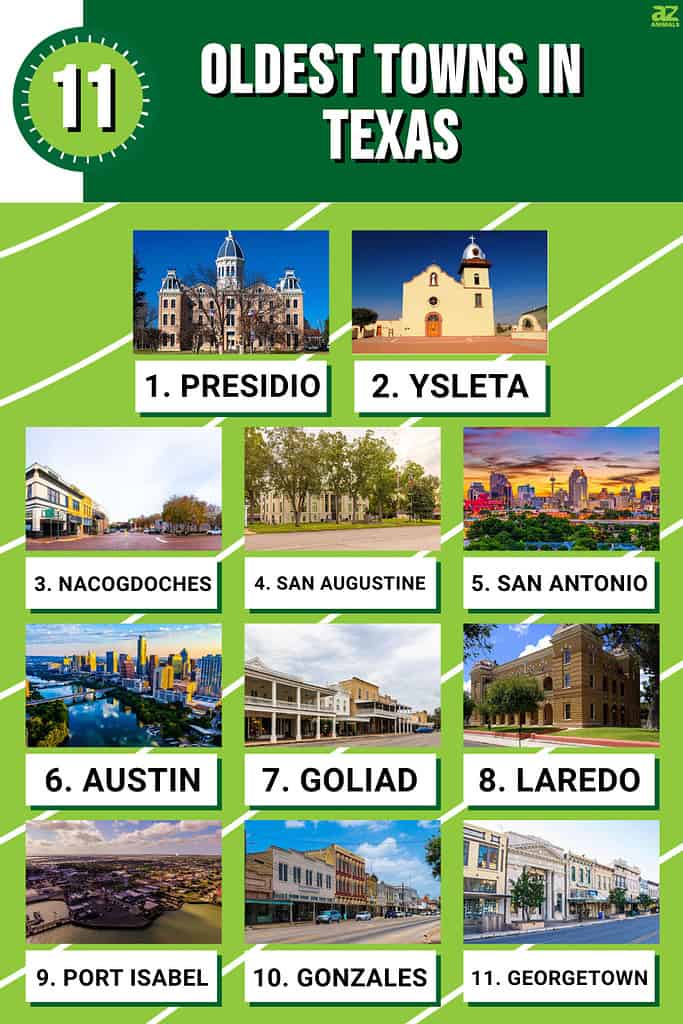
11. Georgetown — 1840
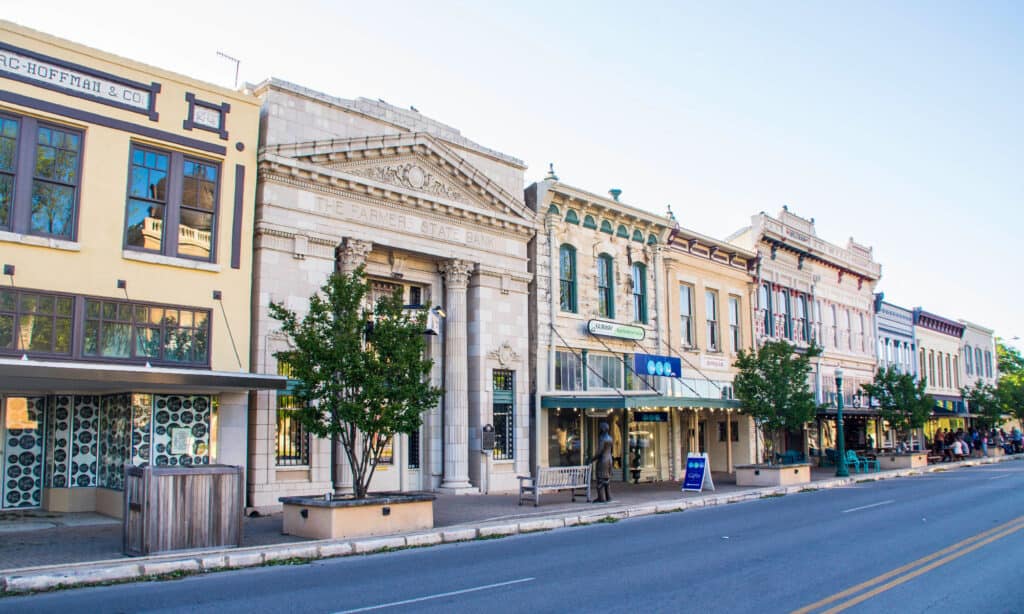
Human habitation dates back to Georgetown at least 9,000 years and maybe far earlier.
©Natalia Silyanov/Shutterstock.com
Although Georgetown has been inhabited since the Paleolithic period, its name was not given to the city until 1840. George Washington Glasscock, who provided the land for the new town, is honored by the name Georgetown. The region’s availability of timber and clean, pure water attracted early American and Swedish settlers. The oldest, still operating institution in Texas, Southwestern University, was established in 1873 from four pre-existing colleges. It is located half a mile from the old Georgetown square.
Human habitation dates back in Georgetown at least 9,000 years and maybe far earlier. The Clovis civilization, a Paleo-Indian civilization that initially emerged approximately 9200 BC and may have existed as early as 11,500 BC at the end of the last glacial period, can be linked to the oldest known occupants of the county during the late Pleistocene (Ice Age).
The nearby Lake Georgetown is stocked with four types of bass, sunfish, and catfish. There are also a number of wildlife trails near Georgetown where one might see deer, squirrels, raccoons, opossums, rabbits, birds, and skunks.
10. Gonzales — 1825
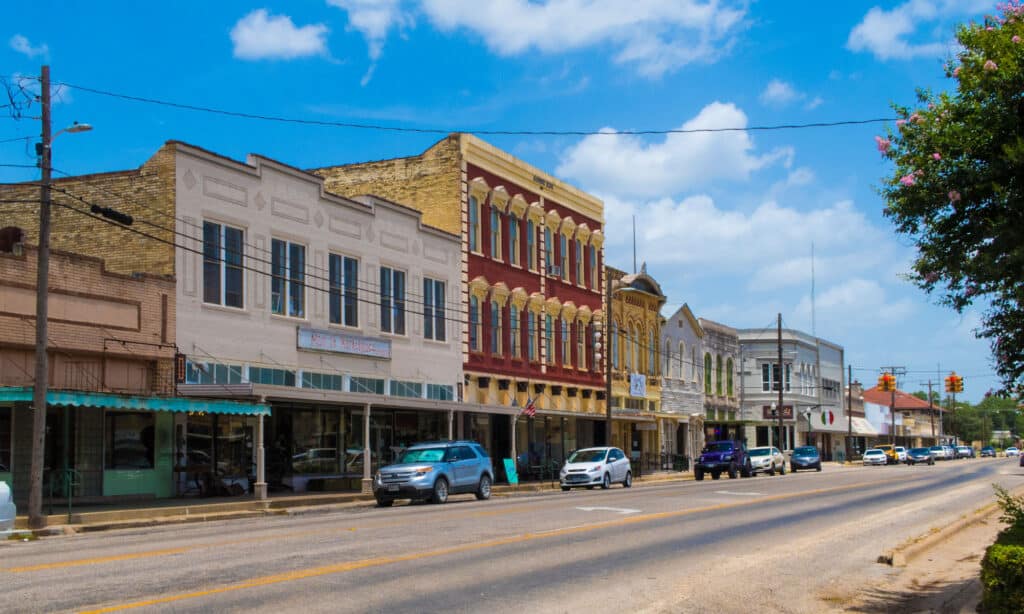
Gonzales served as the birthplace of the “Come and Take It” flag during the war for the independence of Texas from Mexico.
©Philip Arno Photography/Shutterstock.com
Gonzales has one of the most interesting histories in Texas, despite not being the state’s oldest city, and it all begins with a borrowed cannon. In case you didn’t know, Gonzales served as the birthplace of the “Come and Take It” flag during the war for the independence of Texas from Mexico.
Mexican officials gave Gonzales residents a cannon to defend against Comanche incursions in the 1830s. However, the Mexican Army and Texan settlers’ relationship worsened over time, and the commander sought the cannon back.
Instead of surrendering the weapon, Gonzales settlers discreetly recruited 140 Texans to form a militia. In a show of power, they mocked the Mexican Army with a custom flag: a cannon drawing with “Come and Take It” scrawled below. After hours of fighting, the Mexican Army departed, giving Gonzales residents the first Texas Revolution victory.
Wildlife is abudant in the Gonzales area where there are hunting seasons for various migratory fowl like geese and duck as well as for quail and wild turkey. White-tailed deer, javelina, and even alligators are also hunted.
9. Port Isabel — 1770s
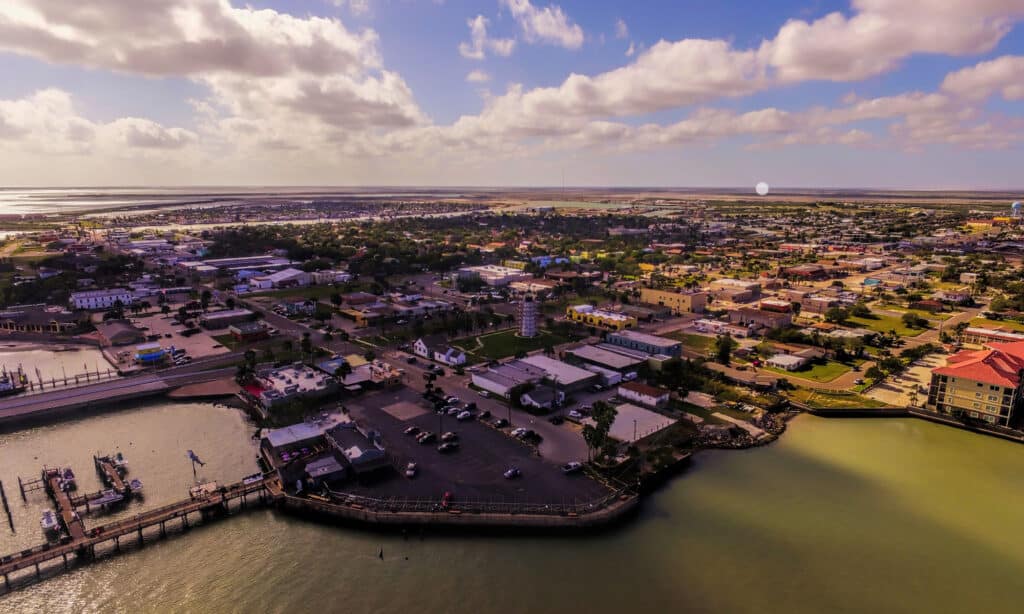
Port Isabel was founded as a town, and before the American Civil War, it was an important port for the export of cotton.
©Hundley Photography/Shutterstock.com
According to the 2010 census, Port Isabel, a small city in Cameron County, Texas, had 5,006 residents. This seaside community was formerly a fishing community called El Fronton that was renamed Point Isabel when the U.S. Army constructed a fort there in the 1770s. Following the Mexican War of Independence, Port Isabel was founded as a town, and before the American Civil War, it was an important port for the export of cotton. Built in 1852, the well-known lighthouse in the little community would play a significant part in the Civil War when the Confederacy sought to hamper the Union forces by taking the light that was intended to guide them through the water.
Port Isabel is noted for the tens of thousands of birds who come to the area such as the Great-tailed Grackle, Laughing Gull, and Great Blue Heron. The nearby Laguna Madre preserve is home to a large variety of birds, and the adjacent Padre Island National Seashore hosts bobcats, coyotes, geese, falcons, alligators, and snakes as well as abundant marine life.
8. Laredo — 1755
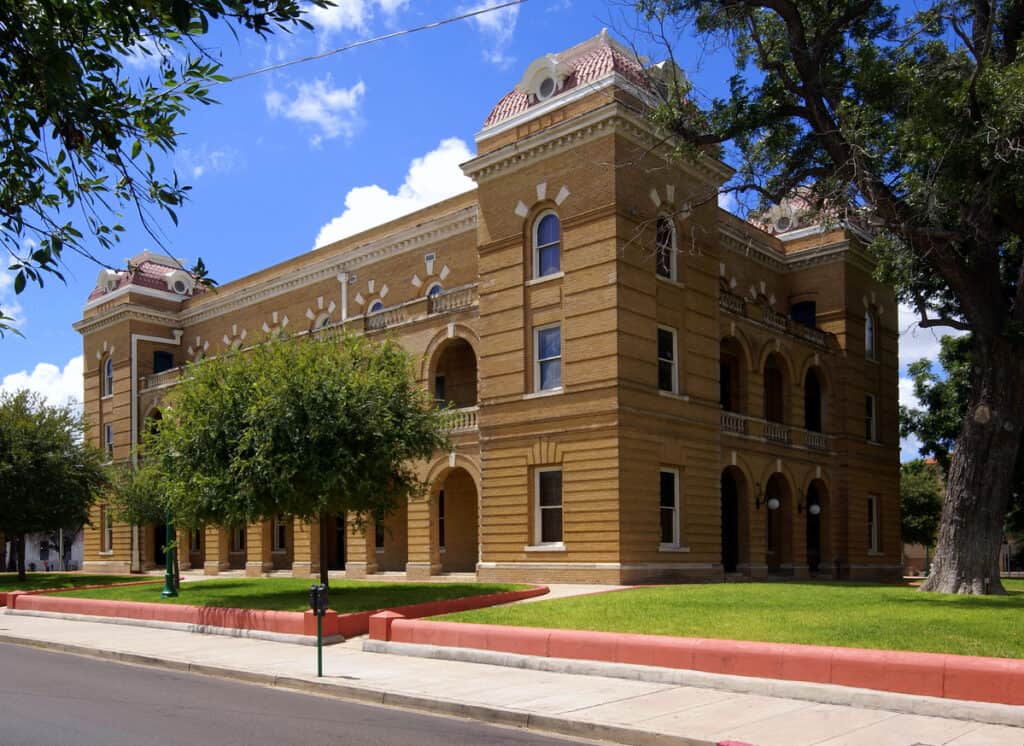
Laredo was established in 1755, making it one of the oldest cities in the state of Texas.
©iStock.com/Bob Weston
Laredo, established in 1755, is the third most populous city along the Rio Grande River and serves as a port of entry for trade between the United States and Mexico. Of all the cities in the United States, Laredo is noteworthy for having the highest proportion of Hispanic residents at over 95%, second only to Puerto Rico. With a population of 322,000, it’s the third most populated city along the U.S.-Mexico border.
In 1840, Laredo joined with three Mexican states and became its own independent country titled The Republic of the Rio Grande. While this republic fell quickly, it’s remembered in Laredo’s practice of flying seven flags: six to represent the countries that have had sovereignty over Texas at any given time (like all other cities in Texas do), and a seventh in remembrance of the Republic of the Rio Grande. In 1848, Laredo officially became part of the United States after the Mexican-American War.
The American cowboy ballad “Streets of Laredo,” first published in 1910 in Cowboy Songs and Other Frontier Ballads by Alan Lomax, is famous for its lament of a dying cowboy, and is remembered among the top 100 western songs of all time.
Lake Casa Blanca International State Park boasts bobcats and a variety of lizards and rabbits. Otherwise, the Laredo area is famous for birding opportunities with chances to see Morelet’s seedeater, scaled quail, grey hawk, Audubon and Altamira orioles, green parakeets, Muscovy duck, red-billed pigeon and clay-colored thrush. There are even four species of kingfisher.
7. Goliad — 1749
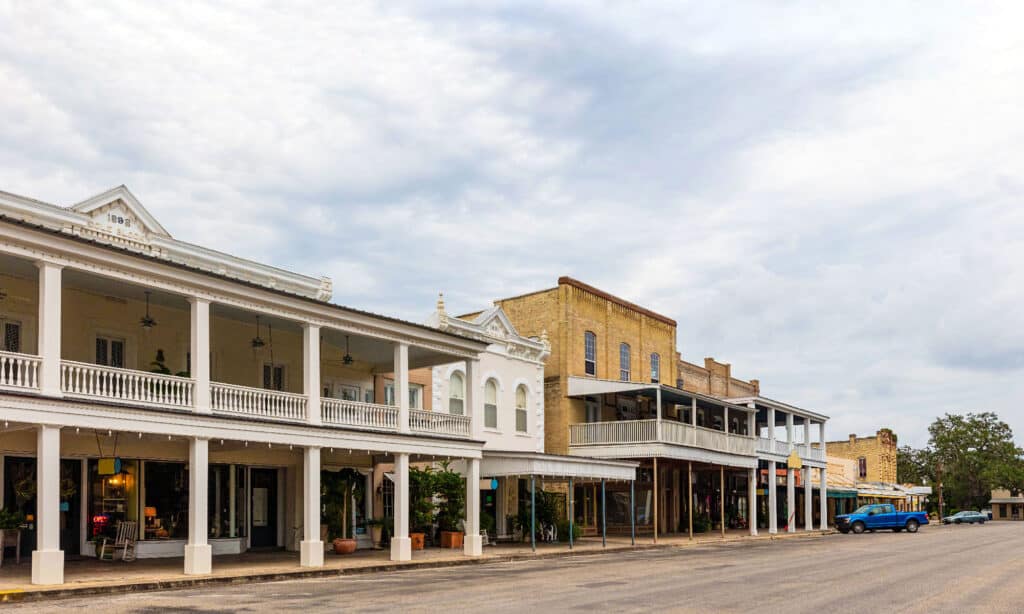
Goliad is one of the oldest towns in Texas.
©Roberto Galan/Shutterstock.com
Father Miguel Hidalgo, a key player in the Mexican War of Independence, is the name that triggers the beginning of the Goliad narrative. Hidalgo’s last name becomes “Goliad” if the silent H is removed and the letters are rearranged. This anagrammatic homage to the patriotic priest has been around for about 200 years.
When colonizer José de Escandón suggested transferring a mission and its presidio (essentially a fort) from the Guadalupe River to a location named Santa Dorotea on the San Antonio River, the little town was founded in 1749. At the new location, the small town expanded along with a new presidio called La Bahia.
Most notoriously, the Goliad Massacre occurred in the town, where the Mexican Army slaughtered nearly 400 prisoners of war from the Texas Army of the Republic of Texas.
Goliad has hunting seasons for the same animals as Gonzales. It also has nearby the Refugio-Goliad Prairie Project where they have returned the land to its natural grass state. Living there are various native mammals, game birds, waterfowl, and songbirds, including such diverse birds as vultures and cardinals.
6. Austin — 1730

Austin, Texas’s capital, was not firmly established by Europeans until the 1830s.
©iStock.com/RoschetzkyIstockPhoto
The things that make Austin intriguing are endless and include world-class performances, slow-roasted brisket, and the Texas Capitol. But Austin wasn’t always the bustling city that it is now. Although the first Spanish mission was constructed in 1730, Austin, the state’s capital, was not firmly established by Europeans until the 1830s. On the south bank of the Colorado River, in what is now Zilker Park, three missions from East Texas were merged and restored as one mission during that time.
The earliest Spanish missions were only temporary, and the village of Waterloo, established in 1837, was the first permanent settlement. Waterloo, a little town at the time, was selected as the capital of the newly established Republic of Texas in 1839 and was later given the name Austin. After being selected as the state’s capital, Austin expanded swiftly, becoming big enough to be referred to as a city by the 1880s.
Wildlife around Austin is like that of any area of Central Texas, known as the “Hill Country.” You can find coyotes, foxes, bats, raccoons, possums, skunks, deer, and snakes. The area lakes carry bass, sunfish, and catfish.
Austin is most famous for the migratory Mexican free-tail bats that live under the Congress Avenue Bridge (which leads from the river to the state capitol building). You can even get a tour of the bats!
5. San Antonio — 1718

San Antonio is the second most populated city in Texas.
©iStock.com/Sean Pavone
San Antonio is one of the most well-known cities in Texas, with attractions including the highly regarded riverwalk and the active Botanical Garden. San Antonio is not only the second most populous city in Texas but also among the 10 biggest cities in the entire United States. San Antonio is among the most historic cities in the nation and is home to numerous 18th-century Spanish colonial landmarks, including The Alamo. But the city was first a little Spanish town called Mission San Antonio de Valero, afterward known as “The Alamo,” before it became a thriving metropolitan powerhouse.
Europeans first explored San Antonio in the 16th century, but a mission wasn’t established until 1718. Since then, San Antonio has continued to be significant to Texas residents on a cultural and economic level.
San Antonio is only 70 miles from Austin, so it is also in the Texas Hill Country with the same assortment of coyotes, foxes, bats, raccoons, possums, skunks, deer, and snakes, including six species of mice and five species of bats.
Fishing takes place mostly in parks stocked with bass, catfish, and trout by the state Parks and Wildlife Department. Area lakes also offer redfish (red drum).
4. San Augustine — 1717
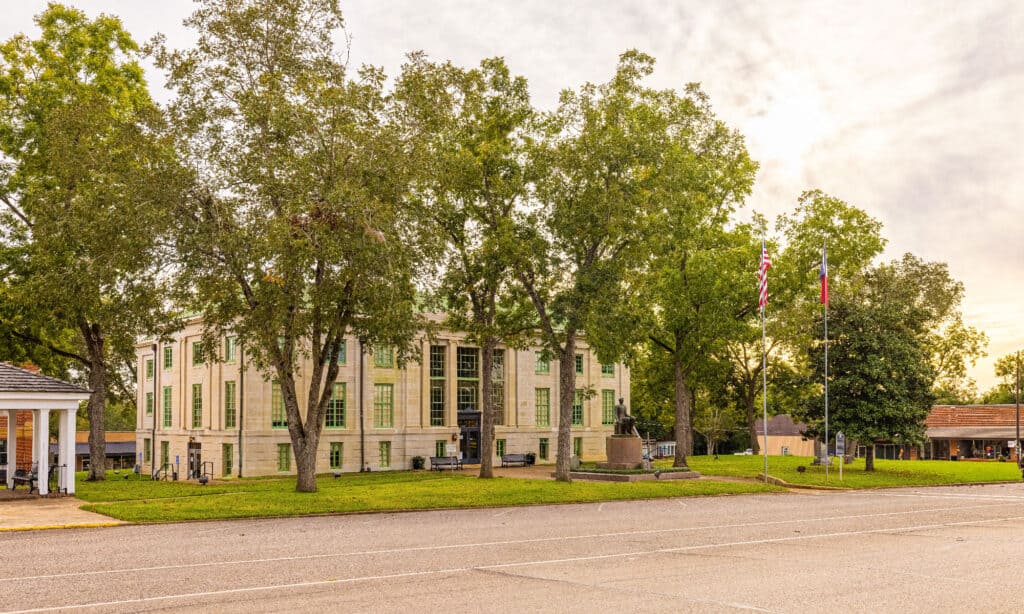
Despite being a little town, San Augustine was the biggest settlement nearby for a while.
©Roberto Galan/Shutterstock.com
An important part of Texas history can be found not far from Nacogdoches: San Augustine. The Mission Dolores State Historic Site is the exploration’s true crown jewel. This Spanish mission-turned-museum, constructed in 1721, chronicles the relationships between the Native Americans and the earliest immigrants in Texas.
Long before the first European settlers came, Native Americans, particularly the Ais tribe, already called San Augustine home. They did not, however, construct any town or mission, and the Ais tribe was left unattended for more than 150 years. Despite being a little town, San Augustine served as the county seat of San Augustine County and was the biggest settlement nearby for a while.
The San Augustine City Lake offers Largemouth Bass, White and Black Crappie, and Channel Catfish. However, two of the largest reservoirs in Texas, Sam Rayburn and Toledo Bend, are nearby and famous for their largemouth bass as well as crappie and catfish. San Augustine is in the Piney Woods of Texas, so its wildlife is what you would expect in a forested area: squirrels, rabbits, opossums, snakes, swamp life (including alligators) and a variety of birds and bats.
3. Nacogdoches — 1716
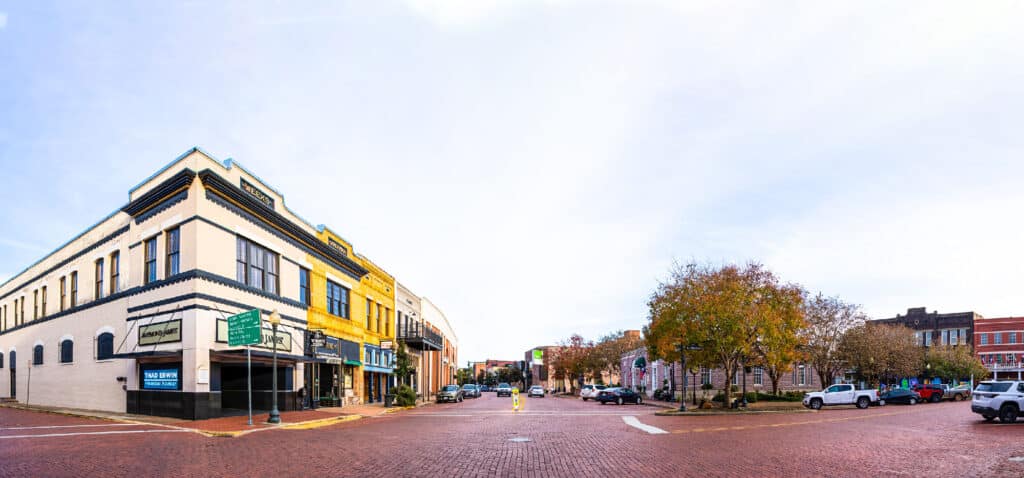
Nacogdoches was formally established in 1779, but its history dates back thousands of years.
©iStock.com/Roberto Galan
Although Nacogdoches frequently claims to be the oldest town in Texas, European settlers did not arrive there until the Spanish established a mission in the region in 1716. According to some data, Nacogdoches may be the oldest settlement in Texas, which implies that native people had lived there for over 10,000 years. Nacogdoches was formally established in 1779, but its history dates back thousands of years to the Caddo Indians.
Nacogdoches had been contested territory throughout its early history by several European settlers, the Republic of Texas, Mexico, and the United States. Despite having a remarkable history, Nacogdoches is only the third-oldest city in Texas. Regardless of its past, Nacogdoches is a wonderful vacation spot with abundant fishing, hiking, boating, and art exhibits.
In the Nacogdoches area live bats, beavers, feral hogs, snakes, quail, turkeys, and white-tailed deer. At Lake Nacogdoches, the most popular catch is largemouth bass, but blue catfish, crappie, and striped and white bass are also available.
2. Ysleta — 1680
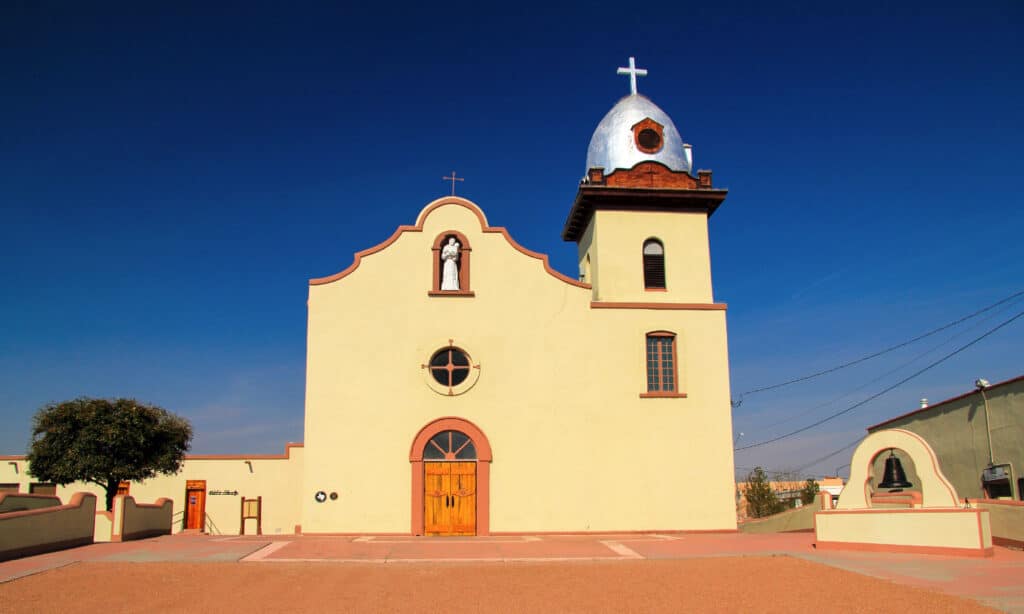
Ysleta makes a strong case for being the oldest colony in Texas.
©William Silver/Shutterstock.com
The teeniest village of Ysleta claims to be Texas’s oldest settlement. Ysleta claims to be the earliest European colony in modern-day Texas, even though it was founded about 150 years after the first town on this list. Ysleta has traditionally been a little town, yet it is now a part of El Paso, a larger city.
Although Cabeza de Vaca traveled through Presidio, the Spanish colonists eventually fled the Pueblo Revolt in Northern New Mexico and settled in Ysleta with some Native Americans. Ysleta makes a strong case for being the oldest colony in Texas as it was a long-term refugee camp and not just a rest area on the way.
Ysleta is part of the El Paso region and is home to deer, mountain lions, bobcats, coyotes, gray foxes, jackrabbits, cottontails, quail, doves, raccoons, skunks, squirrels, and turtles. Recent sightings report the appearance of the oryx, a type of antelope. Ascarate Lake in El Paso has a variety of fish: trout, catfish, largemouth bass, black bass, sun perch, blue gill, carp, shad, crappie hybrid sunfish and minnows.
1. Presidio — 1535

Presidio has never had more than 5,000 residents.
©Sean Hannon acritelyphoto/Shutterstock.com
Lvar Nez Cabeza de Vaca, a Spanish traveler, brought the first Europeans to what is now Presidio in 1535, founding one of the first European colonies in the region. Although the Spaniards founded Presidio in the early 1500s, there is proof that native tribes had been residing in the area for thousands of years prior to the arrival of the Spaniards, making them a far cry from the initial inhabitants of Presidio. Presidio is now the oldest town in Texas, notwithstanding the municipality’s claim that it was founded in 1683.
Presidio has never had more than 5,000 residents, making it a relatively small town. Presidio is currently renowned for its untamed, colorful landscapes, which are excellent sources of inspiration for aspiring artists or nature enthusiasts.
Presidio is on the Rio Grande not far from the Big Bend state and national parks, so it has quite a different wildlife population: mule and white-tailed deer, pronghorn sheep, desert bighorn sheep, and javelina. Area lakes are small and usually stocked with trout by the Texas Parks and Wildlife Department.
Summary of the 11 Oldest Towns in Texas
Here’s a recap of the 11 oldest towns in Texas that we took a look at.
| Rank | Town | Founding Date |
|---|---|---|
| 1 | Presidio | 1535 |
| 2 | Yselta | 1680 |
| 3 | Nacogdoches | 1716 |
| 4 | San Augustine | 1717 |
| 5 | San Antonio | 1718 |
| 6 | Austin | 1730 |
| 7 | Goliad | 1749 |
| 8 | Laredo | 1755 |
| 9 | Port Isabel | 1770s |
| 10 | Gonzales | 1825 |
| 11 | Georgetown | 1840 |
The photo featured at the top of this post is © iStock.com/Sean Pavone
Thank you for reading! Have some feedback for us? Contact the AZ Animals editorial team.






